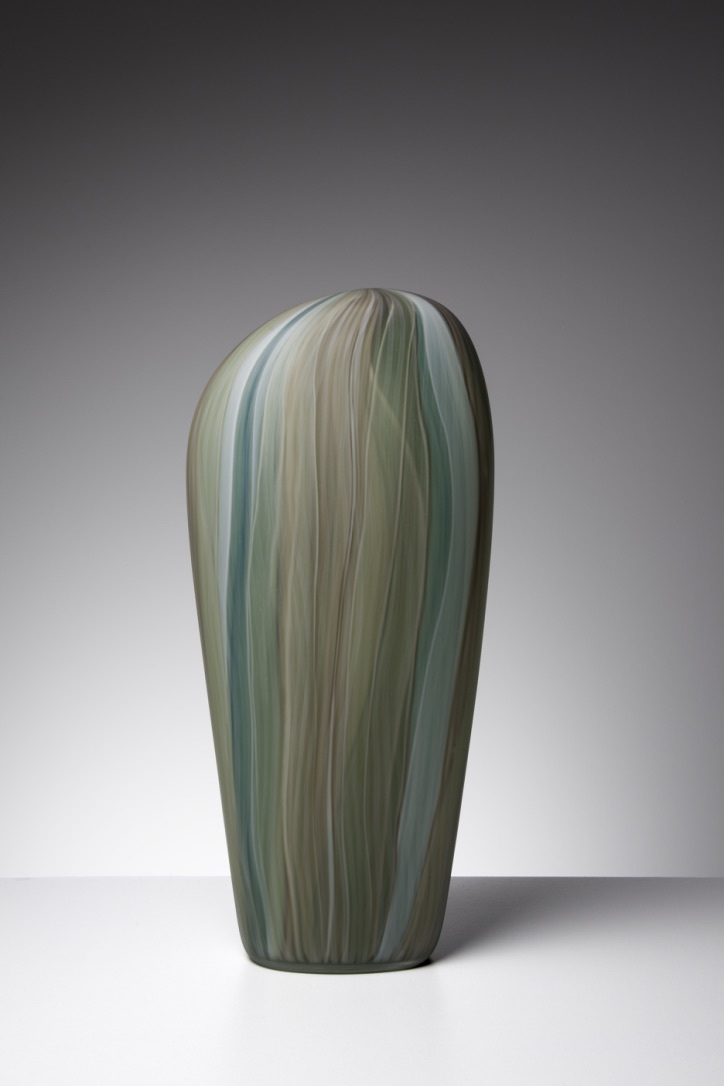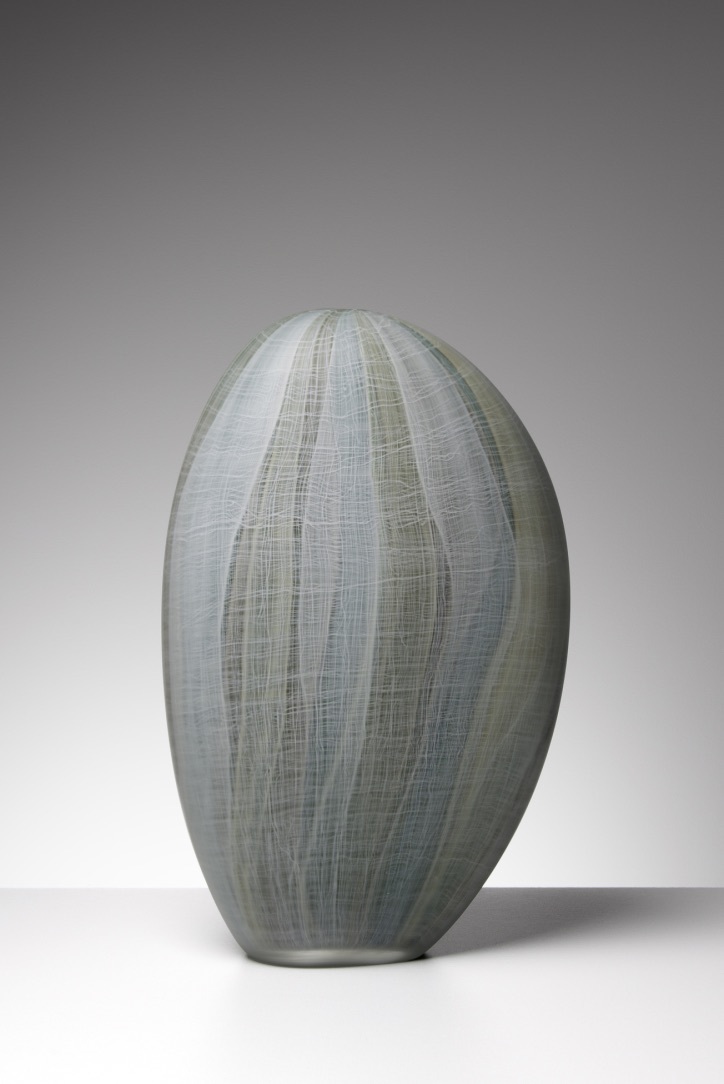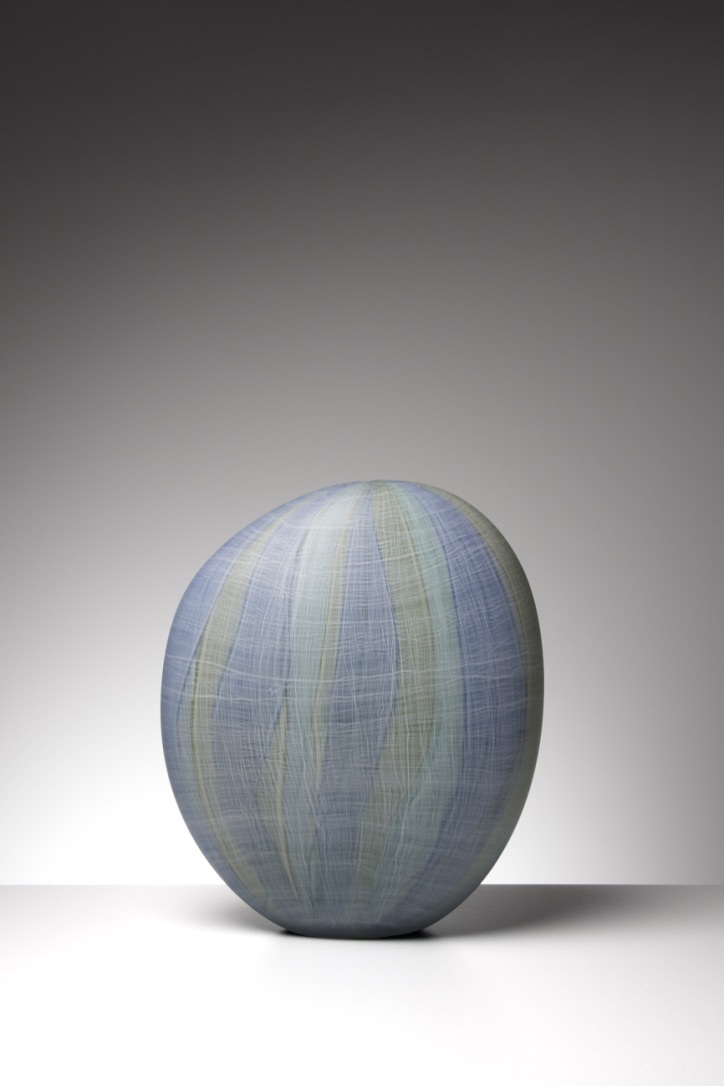Artists who work in the hot shop often fall into a state of intense concentration. Hours melt away over the hot glow of a lit furnace as process enthralls. Australian artist Clare Belfrage describes this state of acute focus and immersion as “falling into” one’s work and looks to capture this mindset in her new exhibition at the Tansey Contemporary Gallery in Denver, Colorado. “Falling Into” is the title of her latest exhibition of “Quiet Shifting” and “Skin Deep” series of glass sculptures that draw inspiration from her native Australia.
Works in the “Quiet Shifting” series are inspired by Belfrage’s observations of rock formations on the Australian Alps.
“I was very interested in the slow but sometimes dynamic movement of monoliths and clusters of rocks which sometimes sees them settled and at peace and at other times with an uneasy tilt or lean implying further movement to come” said Belfrage in an email interview with the GLASS Quarterly Hot Sheet.
The artist makes use of color to capture the character of natural rock formation, mimicking the growth of lichen and moss. Each line drawn on the surface during the hot process forms a map of the lines wrapping and holding the form of its subject. Pieces are then finished off in a cold process, which is a mixture of sand blasting and and smoothing with a pumice stone for a translucent effect on the surface.
“Skin Deep” was created by her observations with the outward appearance of bark on trees. The series is meant to bring into focus the growth of bark, sometimes characterized by its “ripples and twists,” and well as the natural maturing and shedding of bark.
“In Quiet Shifting there are voluptuous forms, bound and held by a woven mesh - the horizontal line as a strong presence” said Belfrage, “whereas the Skin Deep stretch tall with a vertical aspiration expressing dynamics of growth particular to each piece."
This new body of work explores new directions and ideas such as tree bark, while being a continuation of themes from older series over the years. Using earlier works, the artist “re-interprets” her older “Quiet Shifting” series using a different textures.
“The first Quiet Shifting pieces are very textured where the new pieces have a much finer line and it sits under the surface which is smooth like a worn rock,” she says.
Each piece’s shape is stretched and shaped while still glowing from the heat. Lines are carefully drawn into pieces using thin, glass rods that are melted over a glass sculptures, a technique referred to as cane drawing. The surface finish is further refined using a cold-working process.
Cold working is a process that was elevated in Australia by pioneering artists such as the late Klaus Moje, whose emphasis on disciplined and precise cold working was evident from his first classes at the Canberra Glass Workshop, which he established in the 1980s. Moje served as a founding board member of the nonprofit Canberra Glassworks, an organization where Belfrage worked as creative director from 2009 to 2013.
Despite using high-level cold-working technique, and frequently referencing the Australian landscape as inspiration, she does not consider her work “distinctively Australian.” She believe that her works are “common experiences in nature across the world” but will “leave it up to others to decide.”
Belfrage describes her work as “pretty quiet” with moments of intensity, valuing subtlety in its form. However, she hopes that over time the viewer begins to “fall into” the experience, immersing themselves into the experience of nature that inspired Belfrage.
IF YOU GO:
Clare Belfrage
"Falling Into"
Through October 7th, 2017
Tansey Contemporary Gallery
1743 Wazee Street
Denver, Colorado
Email: info@tanseycontemporary.com
Phone: 720.596.4243
Website





